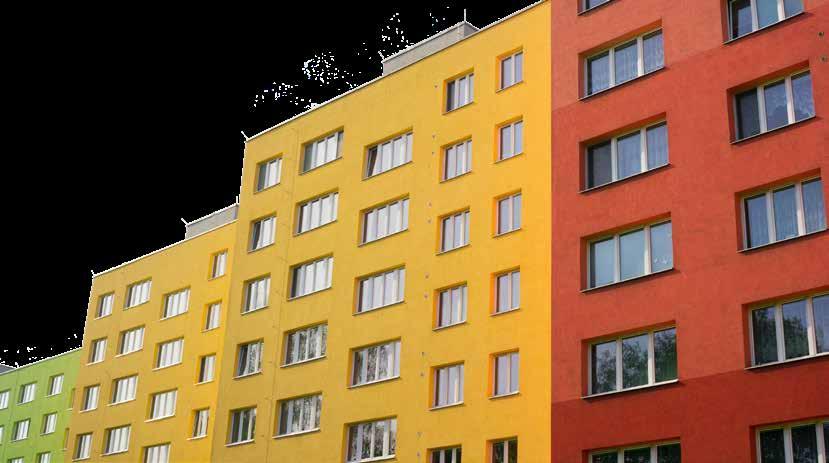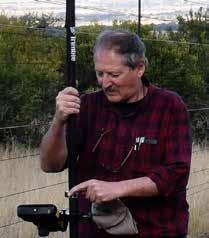
5 minute read
Geomatics
from IMIESA April 2021
by 3S Media
The biggest advantage of sectional titles is that units are smaller and via a multiple-storey development it is possible for more people to own their own home
Pros and cons of sectional title and full ownership
Advertisement
There are several ways to own property in South Africa of which full title (FT) and sectional title (ST) ownership are the most common and apply for any legal entity, such as companies, trusts, government, churches, and organisations.
By Altus Strydom*
Essentially, any legal entity can own property and have other real rights such as servitudes, exclusive use (EU) areas and leases registered over property. Certain rural communities fall under tribal law, where the tribe owns the property, and individual tribe members have no or little security of title. Years ago, there was also the 99-year leasehold system, where property ownership was extended to previously disadvantaged communities. Over time, these were converted to FT ownership.
Ownership is secured by survey, Surveyor General approval and registration in the Deeds Office via the Deeds Registries Act (No. 47 of 1937). The role of the land surveyor is crucial in the property registration process, because they are the person that, prior to lodgement with the Surveyor General, is responsible for certifying that all legal and municipal requirements were adhered to in terms of the Acts that control property ownership. These incorporate the Land Survey Act (No. 8 of 1997), Town Planning Scheme, and in the case of ST also building plans and Spatial Planning and Land Use Management Act (No. 16 of 2013) stipulations.
SECTIONAL TITLE AND FULL TITLE DEFINED
What is ST ownership?
Here, you own a unit in a building and have joint ownership in the common property. The scheme is managed by the trustees and managing agent, which means that there must be consensus in all decision-making. Most decisions are prescribed by rules and the body corporate. If something goes wrong (e.g. the roof leaks or the boundary wall falls over), the entire complex is responsible for the costs.
Owners have a right over EU areas, such as an enclosed garden or carport. Essentially, EU should be surveyed and registered in the Deeds Office as part of the ST plan. This is a real right and owners are in control.
What is FT ownership?
For the sake of comparison, we will discuss

Altus Strydom
FT ownership in an estate or development with free-standing properties controlled by a homeowners’ association (HOA). Here, you own the property and everything on it. If the roof leaks or the boundary wall falls over, it is your responsibility.
Advantages and disadvantages of ST
The biggest advantage is that units are smaller and, via a multiple-storey development, it is possible for more people to own their own home. It is also generally cheaper to live in an ST complex than in an FT complex.
Disadvantages of ST developments are that you share everything with other people and space is more cramped. Rules are not always clear and can easily be manipulated.
Advantages and disadvantages of FT
You are in control of your own property and do not need everyday management rules to make decisions. Generally, middle- and upper-income groups tend to prefer this type of ownership. The disadvantage is that it is costly.
Issues concerning HOA developments normally revolve around the wishes of the individual. A prime example is security, where different security companies operate in the same complex – but when something goes wrong, it is nobody’s fault.
Role of the municipality in ST and FT
When it comes to ST developments, maintenance on internal streets and municipal services are the responsibility of the body corporate. The municipality and its workers cannot enter the complex other than for inspections.
In contrast, for FT complexes, internal streets and municipal services are the responsibility of the municipality unless the HOA has taken ownership.
Common property and EU in STs
The most secure way to register EU is to have it surveyed and registered against the title deed. It has an area and monetary value, and can be sold. An example is a garage or carport.
It’s also important to understand personal right EU. This is part of the rules and normally demarcated via a plan with no boundaries. It is created by the developer or trustees and is open for manipulation. Therefore, upon transfer of the property, the new owner must ensure that the EU is ceded with the transfer.
Crucial questions to ask the estate agent when buying ST
When purchasing property, it’s strongly recommended that prospective buyers obtain clarity on the following key questions and request written proof: - Are all building plans of extensions to all units approved? - Is the ST plan up to date, does it represent all buildings on the property, is the participation quota schedule accurate, and is it registered with the Surveyor General? - Are the changes to the ST plans registered against the title deed of the property? - Are there EU plans? - Are owner rights secured? If all building plans are not registered and something goes wrong – e.g. a fire destroys the property or entire complex – the insurance will most probably not pay compensation. Even where trustees can be held liable for costs and not fulfilling their fiducial duties, the body corporate (read as all owners) will be held ultimately responsible.
To ensure security of tenure, it’s important to ensure that the section number is not confused with the door number, leading to incorrect registration at the Deeds Office. Where in doubt, future owners should consult a registered land surveyor to check and confirm via the Surveyor General office against the building plans.
Questions to ask the estate agent when buying FT
As with ST schemes, there are key questions FT buyers must ask. For example: - Are there any encroachments over property boundaries or building lines? - Are all building plans, especially extensions to buildings, approved?
Recommended good practice
In the case of FT, buyers must insist that the seller/estate agent provides a Land Surveyor’s certificate, confirming the beacons and boundaries, town planning compliance with encroachments and servitudes.
Then for STs, the golden rule is to obtain confirmation of the legal, registered section number, confirm that building plans are approved, and that the sectional plan and building plan reflect the same structures. It’s also important to verify that there are no illegal structures added to the unit.
*Altus Strydom is a professional land surveyor and the chairperson: Northern Provinces of the South African Geomatics Institute (SAGI).
Sketches showing illegal additions to buildings










